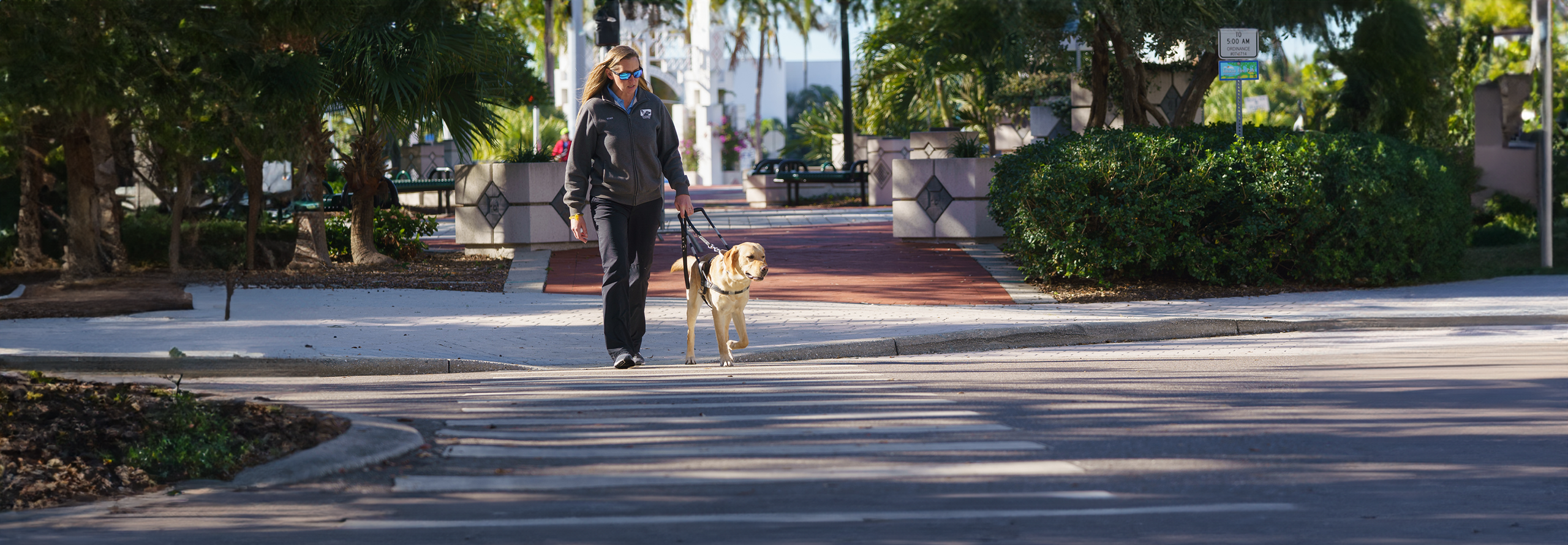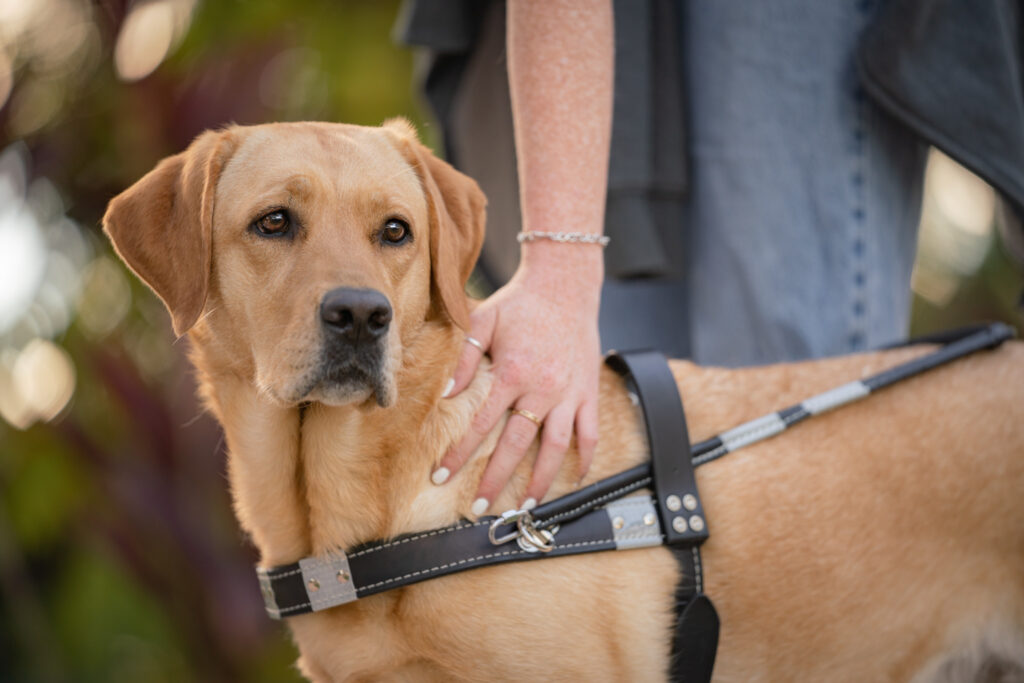
Respect the Harness: Guide Dog Etiquette
Top 12 Tips for Proper Guide Dog Etiquette
When navigating with a guide dog, a person with a visual impairment relies on the dog to avoid obstacles, stop for curbs and crossings, find objects such as doors, exits, and stairs, and generally, help the person arrive safely to their destination. A working dog is alert and busy concentrating on cues. Distracting a working dog can be frustrating to the handler and may put both dog and human in danger, which is why we’re sharing the top 12 tips for proper guide dog etiquette.
These extraordinary dogs aren’t all work and no play. Guide dogs are highly trained to know the difference between “harness-on” and “harness-off.” When the harness is on, the dog is focused and working. When the harness is off, it’s time to relax or play like any other dog.
We know witnessing these dogs out in public is impressive, head-turning, and inspiring – but that doesn’t mean you can engage. Humans, please respect the harness and ignore a working dog.

12 Proper Etiquette Do’s and Don’ts When Encountering a Guide Dog:
 Don’t interact with a working dog by petting, calling out the dog’s name, or giving the dog cues. A guide dog should only hear cues from its handler.
Don’t interact with a working dog by petting, calling out the dog’s name, or giving the dog cues. A guide dog should only hear cues from its handler.- Don’t allow children to interact with the dog. Do teach children the difference between a pet and a service dog.
- Don’t allow your pets to interact with a working guide dog.
- Don’t feed the dog anything without the handler’s permission, especially not table scraps. Guide dogs must maintain an ideal weight and fitness level, not to mention food being a natural distraction from work.
- Don’t attempt to guide, steer, or hold a person navigating with a guide dog. Do let the dog work.
- If the dog is out of harness, do ask permission to pet the dog or to allow children to pet the dog. If the dog is resting, do allow it to rest without disturbing it.
- Walking together? Right-handed handlers often work their dogs on their left side. Do walk on the handler’s right side, a few paces behind. Walking on the left side (the dog side) may distract the dog.
- Do maintain a safe distance. When encountering a guide dog and its handler, give them enough space to move freely. Avoid getting too close or walking directly in front of them, as it can disrupt the dog’s concentration and hinder their ability to guide their handler.
- Don’t make sudden movements. Sudden movements, such as running, waving your arms, or lunging toward the guide dog, can startle both the dog and the handler. Do move calmly and predictably when in the presence of a working guide dog.
- Don’t grab or hold the dog’s harness. The guide dog’s harness is essential for the handler to maintain control and communicate with their dog. Never attempt to grab or hold onto the harness, as this can interfere with the dog’s ability to guide effectively. Do allow the handler to handle the harness and provide guidance to their dog.
- Don’t give unwanted cues. A guide dog follows specific cues given by their handler. It is crucial not to issue cues or attempt to direct the dog yourself. Giving unauthorized cues can confuse the dog and disrupt their trained behavior.
- Avoid unnecessary distractions. Don’t make Loud noises, sudden gestures, or call out to the guide dog, which can divert its attention and distract it from its responsibilities. Do minimize distractions and allow the dog to concentrate on its tasks to ensure the dog can perform its duties safely.
No bones about it! Remember that respecting the working relationship between a guide dog and its handler is vital for their safety and independence. By following these etiquette tips, you can contribute to a harmonious and supportive environment for individuals who rely on guide dogs.
How would you feel about taking your support and knowledge of these incredible dogs to the next level? Consider becoming a puppy raiser at Dogs Inc and learn firsthand about training and handling our awesome working dogs from the time they’re just puppies. We’ll teach you everything you need to know and offer you tons of support! Check out puppy raising here.
You Might Also Be Interested In:
Service Dog Access: Know the Rules and Your Rights

